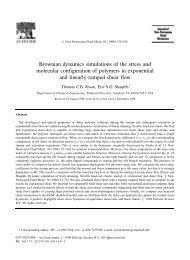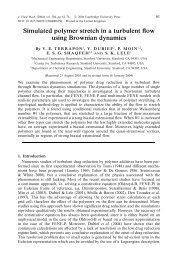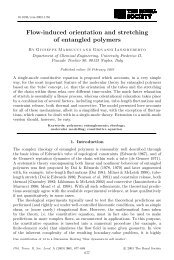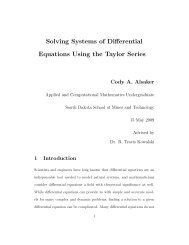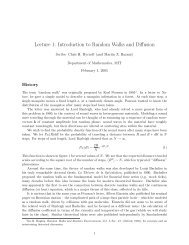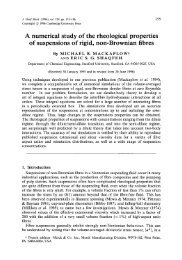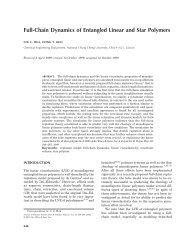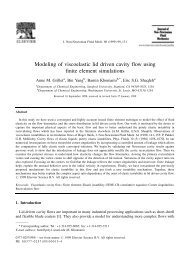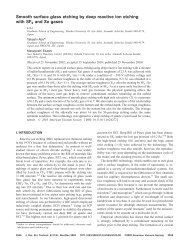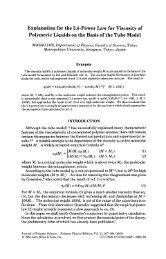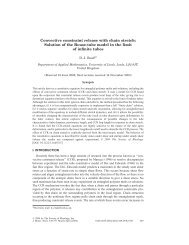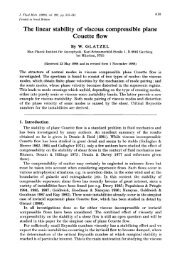Molecular modelling of entangled polymer fluids under flow The ...
Molecular modelling of entangled polymer fluids under flow The ...
Molecular modelling of entangled polymer fluids under flow The ...
Create successful ePaper yourself
Turn your PDF publications into a flip-book with our unique Google optimized e-Paper software.
Chapter 3<br />
<strong>The</strong> pom-pom model in<br />
exponential shear.<br />
3.1 Introduction<br />
In this chapter I analyse the viscometric <strong>flow</strong>, exponential shear. In particular, I examine<br />
exponential shear <strong>of</strong> branched <strong>polymer</strong> melts, using the pom-pom model <strong>of</strong> McLeish<br />
and Larson (1998) (see section 2.5.2 for an introduction to this model). I compare the<br />
<strong>flow</strong> with extensional <strong>flow</strong>s and assess the practicality <strong>of</strong> using exponential shear as<br />
an alternative characterising <strong>flow</strong> for the multimode pom-pom model. Much <strong>of</strong> the<br />
method outlined in this chapter was published in the Journal <strong>of</strong> Rheology [Graham<br />
et al. (2001)], taking advantage <strong>of</strong> existing data from the literature. Subsequently,<br />
I retested the approach using some newly available experimental measurements by<br />
Suneel [Suneel et al. (Submitted)] and was able to confirm my findings on the degree<br />
<strong>of</strong> usefulness <strong>of</strong> exponential shear as a tool for characterising branched <strong>polymer</strong> melts.<br />
Exponential shear <strong>flow</strong>s <strong>of</strong> <strong>polymer</strong> melts are interesting <strong>flow</strong>s because they share<br />
properties in common with both planar extension and simple, constant rate, shear <strong>flow</strong>s.<br />
In particular embedded points separate exponentially in time, like extensional <strong>flow</strong>s, yet<br />
the <strong>flow</strong> direction and velocity gradient are perpendicular, as for all shear <strong>flow</strong>s. Several<br />
experimental studies <strong>of</strong> the rheological behaviour <strong>of</strong> highly branched <strong>polymer</strong> melts in<br />
exponential shear, including comparisons to extensional and simple shear <strong>flow</strong>s, have<br />
been conducted [Zülle et al. (1987), Venerus (2000)]. <strong>The</strong> geometry <strong>of</strong> an exponential<br />
shear <strong>flow</strong> is the same as simple shear but the shear rate grows exponentially with time.<br />
Typically the shear rate evolves as<br />
˙γ(t) = α(e αt + e −αt ), (3.1)<br />
where α is some characteristic strain rate <strong>of</strong> the <strong>flow</strong>. Exponential shear has similar<br />
48



